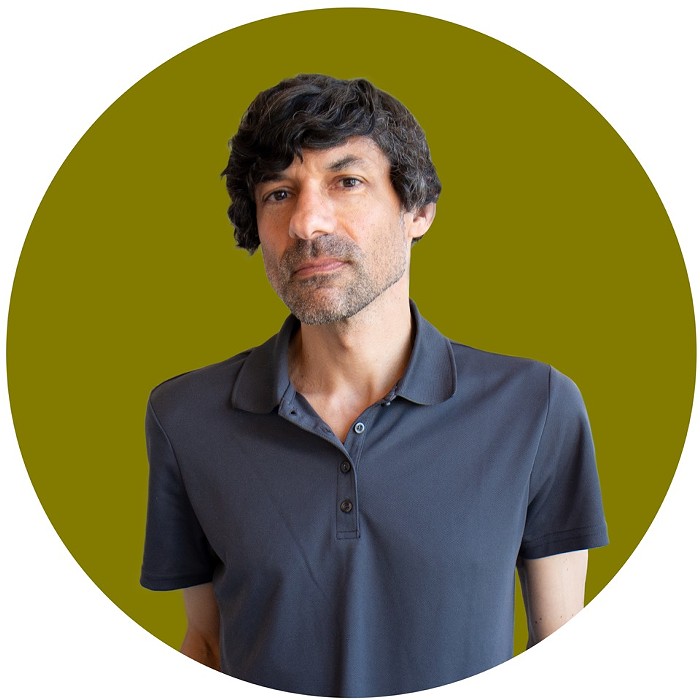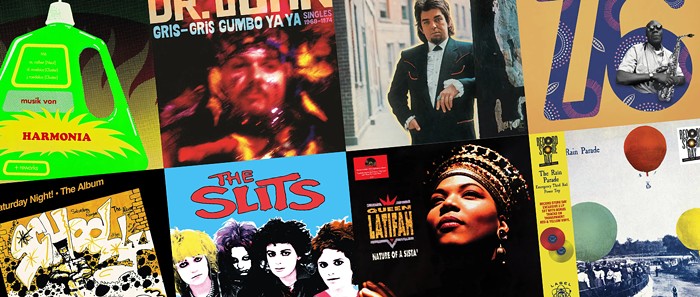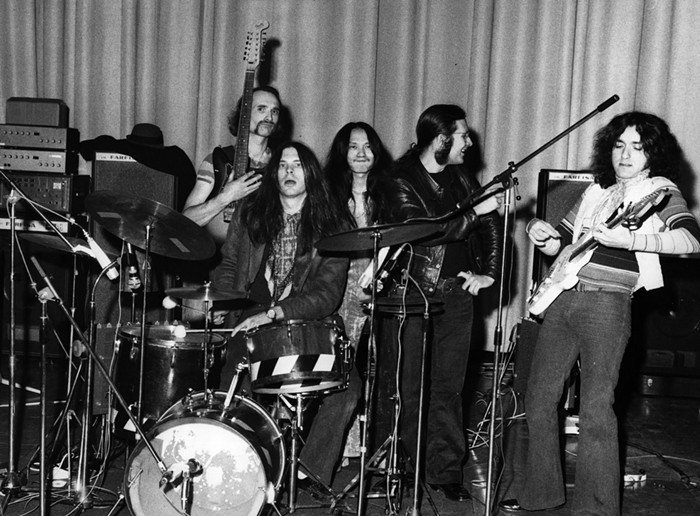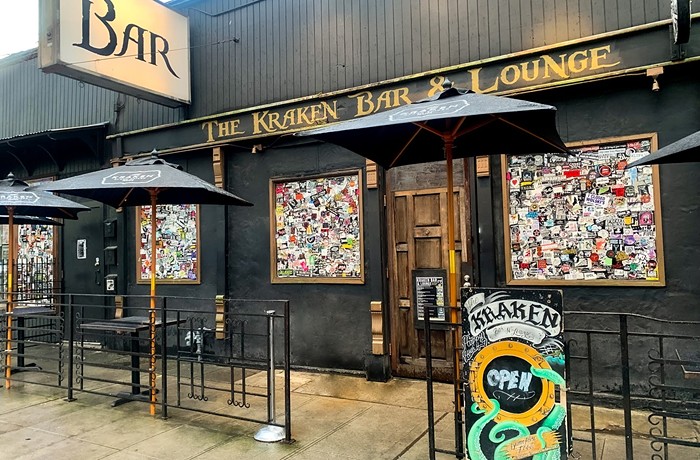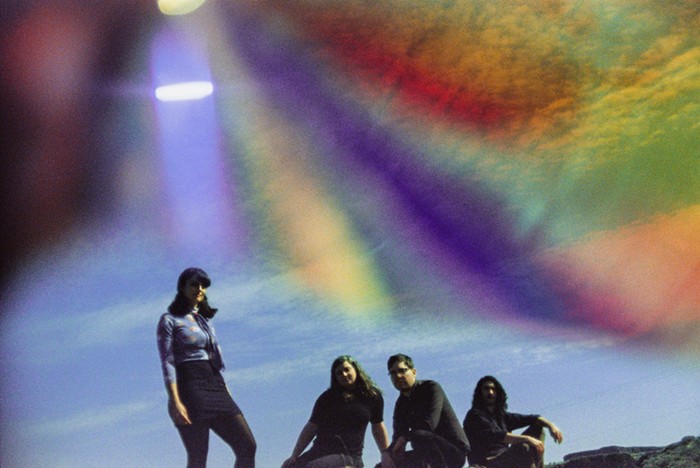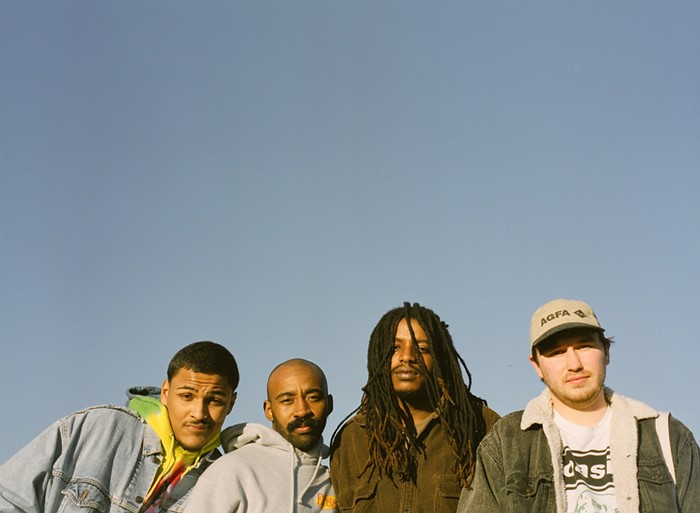One of the greatest albums of all time, Miles Davis’s On the Corner was released 40 years ago this month, and it instantly polarized jazz fans and critics. Miles was 46 when he recorded On the Corner with producer Teo Macero and an elite cadre of badasses, including John McLaughlin, Jack DeJohnette, Herbie Hancock, Chick Corea, and Billy Hart. Davis was in a position to coast on his legendary rep, but as was his wont, he preferred change and innovation over comfort. As I wrote in a review of The Complete On the Corner Sessions box set for OC Weekly, “Miles Davis intended [this album] to be his commercial breakthrough. [He] was hoping to capture the imaginations of the young African-Americans who were breaking sweats, busting moves, and tripping out to James Brown, Sly & the Family Stone, and Jimi Hendrix. How odd, then, that On the Corner turned out to be one of the most rhythmically innovative, atmospherically menacing, and uncompromisingly psychedelic works ever to get filed in record-store jazz sections.”
To commemorate this landmark fusion album, which still sounds ahead of its time, The Stranger asked several Seattle (and former Seattle) musical luminaries for their thoughts on it. Spoiler alert: They like it—a lot.
Ian Scot Price (the Naturebot): On the Corner was such a great album to blast in my dark bedroom as a teenager, as it threw an immediate swamped-out sheen over everything. Searing heat music, able to be appreciated as both achieving the highest level of musical innovation and the ideal of outsider art (to create a new intact world with separate but necessary rules from ours while communicating straight to the id). Give me “Black Satin” over Black Sabbath any fucking day.
Noel Brass Jr. (Afrocop): On the Corner always sounded like a percussion masterpiece—not just the drumming and percussion: Everything on the album has this primitive psych-trance thing going on. Real earthy shit, voodoo culture shit. From the multiple splattering of synths/keys to guitar and sitar, everything hits on that cosmic note that Miles controls. So many driving rhythms to jump on. Miles’s music always has that mystery lingering around it and can be soul-devastating, especially the electric period. I don’t understand the effect it has on me, but that’s always why I dig it. The box set that was released a few years ago is real nice, too, even though it kinda fuses with the other albums that heads already been digging for years.
Scott Colburn (Jabon, audio engineer/producer at Gravelvoice Studios): Miles Davis was one of the few jazz heavyweights who never stood still. Even though Bitches Brew and On the Corner were panned when they originally came out, it was only because [critics] couldn’t comprehend the direction he was going in. On the Corner is one of the best experimental albums of all time. His idea was simple: assemble some of the freshest new jazz players in a room and record everything that happens. It’s pure jazz alchemy. When you hear the unedited versions of these jams, you start to fully understand what kind of sonic experiments were taking place.
Bill Horist (Sych): I first heard On the Corner 20 years after its release and 20 years before our present time—the early ’90s, the center point between way after and way before. My formative years were ensconced in punk rock and a healthy dose of goth/industrial (mostly the kind that had some fiery abstract aggression or bordered on things like musique concrète; but also admittedly some rather fey and effeminate synthy stuff). By the early ’90s, I was in college, smoking weed, playing music, and getting hipped to a whole different side of the ’70s than I’d been exposed to in suburban Chicago and from which I adamantly shied away. This wasn’t the ’70s of disco, coked-up hippie death knells and blues rock; this was the ’70s of King Crimson, Mahavishnu Orchestra, and Miles Davis. This is a decade that, to this day, continues to reveal obscure visionaries to a future-world that grasps ever more desperately for newness.
On the Corner hit me immediately, as though I’d just turned a corner and fell upon some sexy and alien roving party cutting up an urban parade ground. These grooves were compelling as they strutted by in the heaped finery of electric abstraction. I wasn’t hearing notes but rather sounds that became characters in this marvelous play. Tight cluster stabs of throaty electric guitar festooned deep pockets between blooms of keyboards and fuzzy keyed paroxysms. Effect-coated trumpet wailing like a banshee, woebegone and in heat. Diced tabla/tambura loops hung in ethnographic collages. Percussion assemblages collecting in climactic and transitional shoals. The cut-up ghosts of Gysin/Stockhausen swimming through the rafters and periodically hitting the funk floor in clumps of things yet to come. The harangue of inculcated and good-natured but reproachful heads appearing and disappearing in a dub fog.
There is no need to stress the importance of this record, despite the initial disdain with which it was received. There is little to no music made in the last 40 years that doesn’t have some trace DNA from On the Corner. For me, this was new in so many ways but also firmly familiar—something so seemingly idiomatic but free of any hackneyed signifiers of the music from which it drew breath. It was Pynchon’s dream drug Oneirine, which produces hallucinations drastically different from reality but still plausible. I had heard its DNA in so much other stuff to which my ears remained obdurate, but here in this abstract palimpsest, such sounds, dislodged from their boilerplate antecedents, found new life and mobility. This record inspired me to trace its chimeric DNA threads back to sonic places that I hadn’t the ability to appreciate before. There are very few adjectives used to describe great music of all stripes that don’t apply to this record.
Additionally, this record turned on a whole generation of disaffected white youth in the ’80s, ’90s, and beyond. Kids and adults who didn’t identify with jazz, its baleful bluesy predecessor, or the burgeoning rap culture found common ground on the corner. The addictive grooves and insistent aggression of its character fomented a universal gateway among cultures, ages, races, and tastes. Those of more iconoclastic persuasions revel in the apostasy of jazz’s beloved son. This gateway isn’t redoubted in the center of a protected block; the gateway is out there, exposed: on the corner.
Randall Dunn (Master Musicians of Bukkake, producer): The first time I heard On the Corner, it was a revelation. My brain melted at the possibilities, and that was decades after its release. Dark, aggressive, and supremely funky, it seemed to be a transmission from some other dimension, so much to relate to but so far from anything. Now here we are an astonishing 40 years later, and still to this day most modern jazz artists, electronic music, krautrock revivalists, and general psychedelic enthusiasts—with all of the modern crutches and digital helpers—still fall short of making something as rhythmically compelling, sonically complex, or as groundbreaking as what Miles, his band, and Teo Macero did with that record. It remains a handbook for progressive music production for me in every way. While all others continued after him to ape the sounds and favor style over substance, as so often happens with old musical movements, Miles and Teo’s collaborations remain years ahead of so many musical packs, it’s inspiring! It is a great testament to when futuristic vision of production meets a composer’s skill and a band in a room with endless ideas and musical knowledge.
Sean Curley and Amber Rossino (The Midget): Can you draw a direct line from On the Corner to Richard D. James? We think so. On the Corner is electronic music—futuristic, modern, experimental, spatially unique—as transcendental as krautrock, but a wholly American distillation of disparate cultural influences without sounding “touristy.” It is lurching, robotic Afro-funk. On the Corner showcases the studio as instrument: Rarely called out but omnipresent, [it’s] a polestar for 21st-century music. Looped phrases, radical panning, effects, and cut-up beats are combined in exploration of nonlinear recording. The result is entirely unique and compositionally complex. These pioneering production techniques laid the foundation for digital home recording, for what we do 40 years later. On the Corner was a premonition of musical immediacy, of a protean modern age. Miles Davis was the ultimate musical futurist.
Jeffery Taylor (Climax Golden Twins, Hound Dog Taylor’s Hand): As he himself famously put it, “I have to change, it’s like a curse.” The pundits couldn’t hang. Fuck ’em. I’ve heard that Betty Davis was influencing Miles’s listening habits in the late ’60s: Hendrix, Sly Stone, Funkadelic, and probably loads of other stuff. This seems likely to me as evidenced by his output at that time and on into the mid ’70s (and you really should examine this era if you have not). Tablas, drones, African rhythms, funk bass lines, acid-guitar spikes, synthesizers, and Teo Macero’s editing add up to a frighteningly boss psychedelic stew. Grooves solid as diamonds with freaked-out tendrils that wrap around your soul and poke at you where you least expect to be poked. Sometimes they draw blood. Sounds like fun, doesn’t it? You’ll be okay—just let it wash over and through you; there is no other way. I’m a sucker for a solid vamp, and On the Corner will vamp you to the heavens.
Milky Burgess (Master Musicians of Bukkake): On numerous occasions when Master Musicians of Bukkake have an improv section, the cue is often “Black Satin.” The way this track blends backbeat and Hindi percussion with whistling, wah trumpet, synths, and sitar is soul-stirring—brain-jarring, even. Very inspirational to adventurous improvisers.
Trent Moorman (Fresh Espresso, etc. etc.): On the Corner is a mobile album. One for the headphones, to walk through and around the city to. It grows legs every time I hear it. I’ll end up somewhere and not know how I got there. A clearing. A field. A ledge. Usually someplace at night, looking at the city from a distance, with its edifice cakes of eyes. Maybe it’s the electric sitar, or Chick Corea on keys, I don’t know. On side A, the beats and schemes seem more levitated than played. At 3:45, McLaughlin’s guitar enters me into the Phase of the Absolute Lizard. Fifteen minutes in, I turn into a tick the size of South America, and a postapocalyptic world feeds on my blood to survive. Thanks, Miles.
Andy Reichel (Gel-Sol, DJ for PROG!): The thing that always intrigues me about On the Corner is its loose syncopation. The music has this fantastic momentum where it feels like it’s always in danger of toppling over itself; it’s like an oddly shaped rock rolling down a hill.
Jack Gold-Molina (Jack Gold-Molina Trio): On the Corner was more than a groundbreaking recording. Miles’s creative ability was extreme and he was taking contemporary music completely over the edge. When I first heard this record at Cellophane Square on 42nd, it was right after I saw him in 1985, when he and his band that featured guitarist Mike Stern scorched the walls of the Paramount Theater and shocked the audience. People left that night with their eyes wide open and their ears ringing. I was profoundly moved, and my first thought after putting the needle to vinyl was “What the hell am I listening to?!” It scared me and at the same time deeply inspired me. I needed more. For those of us who dared to pursue what he was offering, I believe that Miles was a good friend and a kind of spiritual mentor. This album paved the way for some his most important work, including the Agharta album in 1975 and, toward the end of his career, Tutu and Amandla. From the start of his electric era in the late 1960s all the way through to the early 1990s, debates raged in the press and in academia about just what kind of music Miles was playing, and what is so intriguing is that to this day, nobody really knows. I wish I could have thanked him personally for his incredible influence on me.
Pat Thomas (Mushroom, author of Listen, Whitey!): If it were not for Miles Davis’s On the Corner, there would probably be no Mushroom. Mushroom is a band that I formed nearly two decades ago that along the way has collaborated with members of Faust, Tortoise, Soft Machine, Gong, and Cream. But the story goes like this. I was touring Germany as “Pat Thomas with the Band & Street Choir,” doing my best or worst Lou Reed/Bob Dylan imitation, circa 1994, when we stopped at a used CD store in Frankfurt to pass the time. The guitar player in my band, Pat Johnson, put a copy of On the Corner in my hand and said, “Ever heard this?” “No,” I replied. “Well, if you like Sly Stone’s There’s a Riot Goin’ On, you’ll dig this.” Okay, I said, I’ll give it a try. I bought the CD, brought it back to San Francisco, and within weeks, I tossed my singer-songwriter career out the window, got back on my drum set, called up members of bands like Slovenly and Camper Van Chadbourne, booked some studio time, and recorded my first album of improv-jazz-psychedelia. Some dozen albums later, we’re still going strong and we still haven’t improved on Miles’s original template.
Andy Sells (Afrocop, FCS North): I first heard On the Corner at a time in the mid ’90s when I was playing all of these breakbeats on the drums and mixing it up with punk, funk, and jazz. It really inspired me to connect the dots between the state of hiphop/electronic dance music and all of the ’70s electric jazz. Miles seemed to have pulled sound back from 20 years in the future. It was inspirational to hear what Jack DeJohnette and Billy Hart were laying down back then. Sounded modern to my ears. The energy is key. Heavy vibe and cut-up rhythms. Like something serious is going on, but you need to dance.
Troy Wadsworth (Medical Records owner): [I come] from a shoegaze, experimental, and synth pop background, [so] jazz was very foreign to me. When I first heard On the Corner (and Dark Magus), I discovered something that was completely new to me. Encompassing almost every genre of music that I love (repetition, noise, dance music, drone, etc.), this record pulled it all together for me. What is more amazing is how relevant it is today. Basically impossible to replicate, this monumental collection of tracks is unrivaled.
Norm Chambers (Panabrite): In the early ’90s, I got into electric-era Miles Davis and Can simultaneously. I just thought they had such a similar vibe going for a few years during the early-to-mid-’70s, and even though they truly don’t bear much relation, I still tend to lump them together in the OCD musical organization in my mind. Although In a Silent Way is my favorite one from (almost) that era, On the Corner and Dark Magus are probably my favorites of his space-funk works. On the Corner is the “fun” one, however. This stuff oozes the groove and the grime in equal measure, even if it was made to be a commercial jazz-funk record. I’m not necessarily a fusion or funk pro, but this definitely inhabits its own microcosm, which I can appreciate. In a funny way, it’s more or less ambient music in that there is no real beginning or end, just a winding odyssey you can zone out to—usually funky, often spooked, and even a bit paranoia-inducing in its dark tone. Had there been some more extreme Sextant-type synth noodles, this stuff would have gone even further. On the Corner hasn’t directly influenced me much, but I can definitely appreciate and respect it as an innovative work. ![]()
